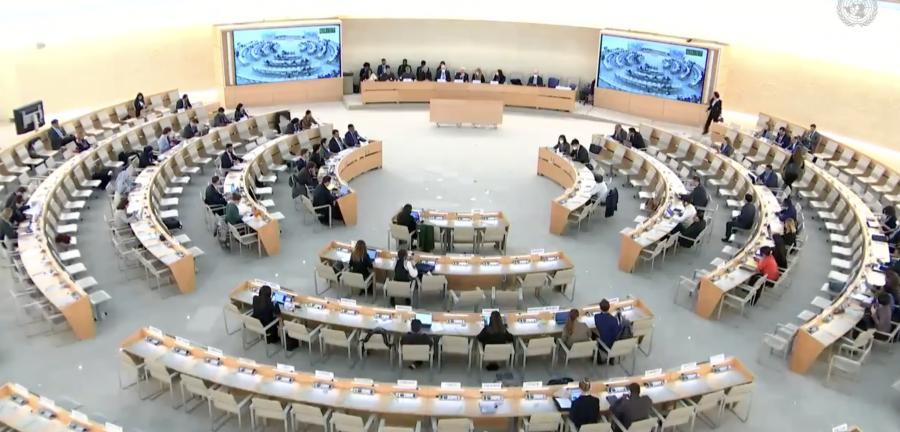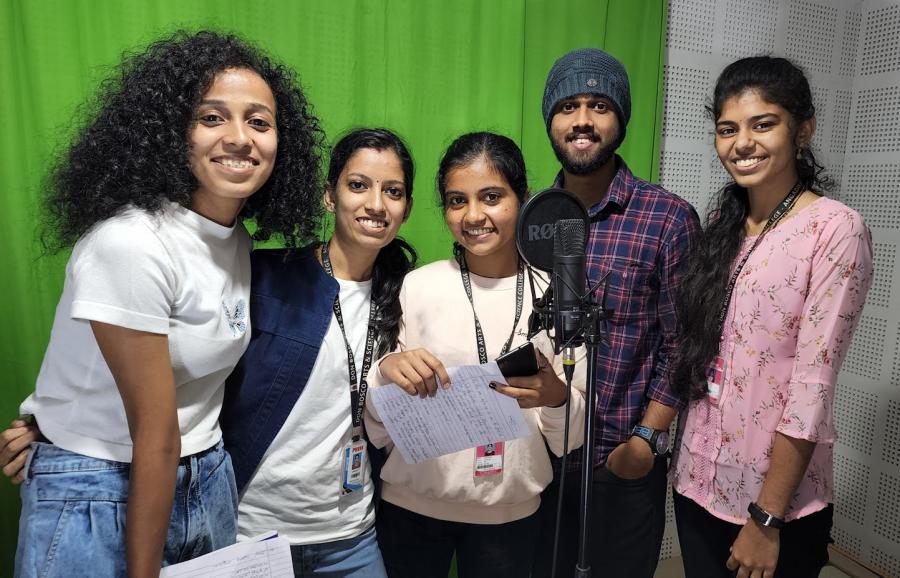Aided by the NGO Lokadrushti, indigenous women in Western Orissa, India, have mobilized
effectively to gain greater access to water to improve livelihoods in their drought-prone villages.
Drought. Death. Disease. Dissolution of families. Without sufficient water, these were stark realities of life that the tribal Indian women of Nuapada district in Western Orissa refused to accept. To salvage their villages, their families, and their livelihoods, the tribal women launched grassroots efforts to bring water to their villages in the late 1980s. They were aided by Lokadrushti, a poverty-alleviation NGO focused on building self-managed and controlled people's organizations.
Nuapada district suffers from erratic rainfall, long dry spells, and drought-like conditions every alternate year. For the tribal populations dependent on rainfall to support their life-sustaining agriculture and forestry, existence had become extremely difficult. The men in the villages left their families to search for work in the neighboring state of Chhattisgarh, leaving women to look after the families. This seasonal migration added to the burden of the tribal women, now responsible for food production, as well as the welfare of their children and elders.
In 1985 approximately 86 percent of Nuapada's population lived below the poverty line with an annual per capita income less than Rs. 8500 (USD $200) per annum. It was that year that the NGO Lokadrushti was created. On the village level, Lokadrushti organized groups aimed at educating local people on their rights and entitlements, water users' societies, and samaj vikas mahila samitis (women's development
committees).
As a result of these efforts, today registered independent people's organizations headed by tribal women are a strong force for positive change in 152 villages in Nuapada. These tribal women's organizations have taken on a number of initiatives in partnership with Lokadrushti. One of their major priorities is the management of water; their successes to date have been impressive.
Mobilizing to Secure Water
In Bhainsadani village, people lacked drinking water from February to July each year. Village leaders Subhudra Paharia and Hema Majhi first spearheaded a march to protest for water in 1988. Due to their leadership, the women of Bhaisadani initiated a movement, organized rallies, and gave a memorandum to the Block Development Officer (BDO) on the issue of water problems. The women rallied the village in 1993 to construct a dam of the Rani Jhola stream, including a cement canal and large water harvesting pond. It was completed in 1996. Since then, the village continues to maintain the structure with its own labor and savings.
Subhudra Paharia recalls:
- “ The government gave some token support to us by sending water in tankers to the village in 1988 to 1989, but clearly this was not a solution. The local women's collective decided to take matters in their own hands. With the assistance of Lokadrushti, we drew up a Village Resource Map, and the Rani Jhola stream was tapped and a permanent diversionary dam was constructed. The water was then channeled through a 2.5-kilometer channel that was nearly 2.5 feet deep. The entire village using traditional wisdom worked to build a large water harvesting pond on a seven-acre plot.”
Simultaneously the local women's collective took up forestry activities, as well as maintaining the catchment area. Today, the face of Bhainsadani has changed. The wells and tube wells have been recharged, and there is water even during the summer. The forest has been regenerated, and villagers are rearing more livestock.
Constructing Rain Harvesting Structures
From 1993 to 2003 Sukri Paharia from Bhaisadani led the women’s efforts to bring water to drought-stricken villages of the Khariar, Boden, and Sinapali Blocks of Nuapada district. Much of the work centered on constructing rain harvesting structures with low-cost technology developed by Lokadrusti with the indigenous knowledge of the tribal people.
These rain harvesting structures feature reservoirs with earthen dams on infertile waste lands with high slopes. During the construction of these dams and reservoirs, almost all the mud and stone required for the embankment is dug from inside the reservoir. This method not only augments the storage capacity of the irrigation structures but also greatly cuts construction costs. In some of the structures, stone patching and grass patching also reduce the cost.
In addition, mechanisms are included that allow flexibility in the reservoir storage capacity to accommodate different rainfall levels during flash floods or the flooding seasons of mid-July and August. The rain harvesting structures have proved of immense utility to the small and marginal tribal farmers of these villages, particularly during the customary dry spells in September and October.
According to Sukri Paharia:
- “ Our women's associations maintain the reservoirs, decide on the allocation of water for farms, and fix the taxes to be paid by the users. This is not easy, as those with larger land holdings want more water than their fair share. Earlier there were often fights over this issue, but now both men and women realize that water is a scarce resource and requires to be used judiciously.”
Addressing Health Threats
People's struggles for water in Nuapada district extend beyond agricultural concerns to addressing severe health threats. For example, in 1998 hundreds of people in the Boden Block villages of Kirekela, Kirejhola, Kotamal, and
Karlakot were detected with the black teeth, bent legs and hands, and premature aging associated with fluorisis, which is often caused by excessive fluoride content in water. As a remedy, the government sealed all the deep surface tube wells without providing any alternative water sources.
Samaj Vikash Mahila Samity (SVMS) federation leaders Chitri Dei and Usa Dei spearheaded the movement to address the lack of sufficient water. They moved from village to village, door to door, to mobilize the tribal women to demand from the government sufficient drinking water without excessive floride. The village women’s committees, with the cooperation of SVMS, organized rallies of hundreds of villagers. They brought their demonstrations before the local government officials to demand a permanent solution to their problems with water quality and
quantity.
After persisting for four years, the women achieved their victory in 2002, when the government provided a permanent solution by providing drinking water through a pipeline from the Sunder River, a seasonal river about 12 kilometers from the villages.
Increasing Harvests
In Maharajor village, tribal women headed the effort that resulted in the construction of a dam, begun in 1999 and completed in 2002.
Basanti Majhi, an executive member of the Samaj Vikash Mahila Samily, describes the results:
- “ The drought-prone villagers are now able to ensure one good crop even during a drought year. During a normal monsoon year, they are able to harvest two crops. Due to the construction of the dam, all the dug wells have been recharged, and the people are able to grow vegetables and market their own products. They have even started pisiculture [fish cultivation].”
Tribal Women's Federations Gathering Strength
In their major campaigns to improve access to resources and foster self-empowerment, the women's federation has organized village women's self-help groups, as well as thrift and credit activities with the local banks. One of their first activities was to take loans to dig wells and purchase pump sets.
The long struggle and hard-won successes to access greater water resources have made a major difference in tribal women's lives. Without having to trek long distances for water, the tribal women now have more time to attend to their homes, families, and microenterprises. More importantly, tribal women's organizations have been able to take an active part in community matters and feel empowered. With the help of Lokadrushti, they are increasingly recognized by local officials as compelling agents of change.
Dr. Neera Burra is a social anthropologist currently working with UNDP’s India Office as Assistant Resident Representative and Senior Social Development Advisor. This case study is the outcome of a UNDP-supported project to empower tribal communities to access resources to fight poverty.



